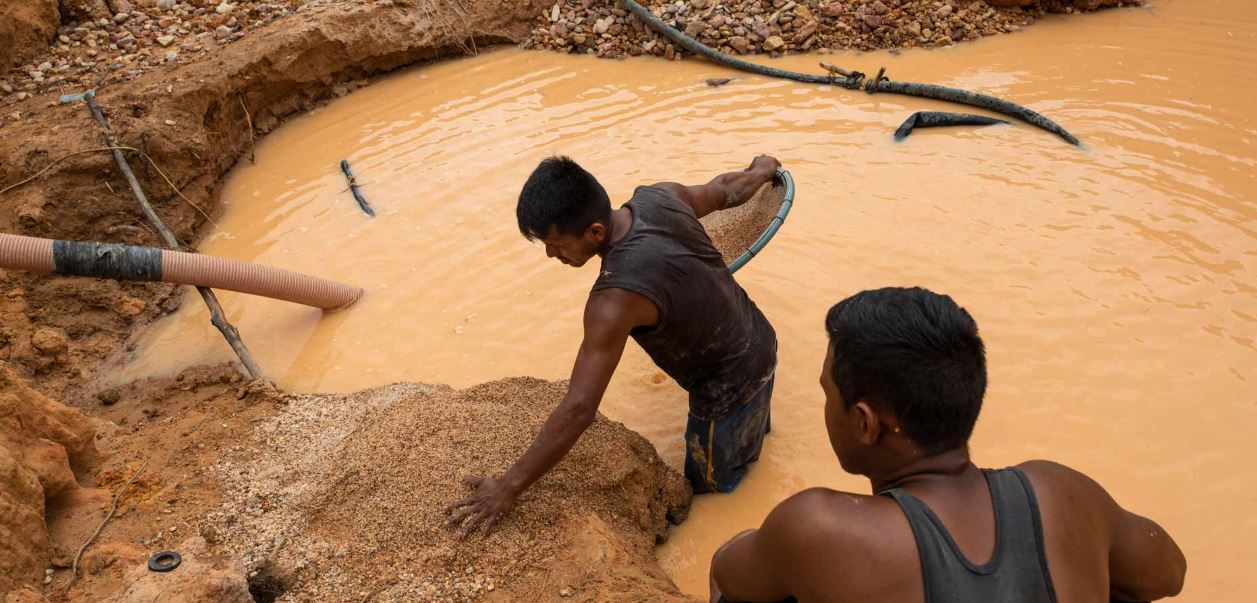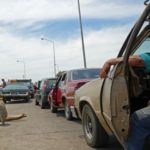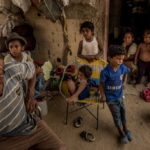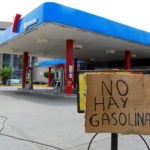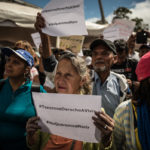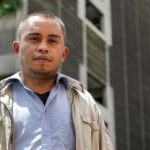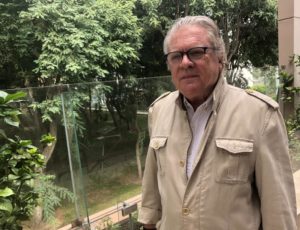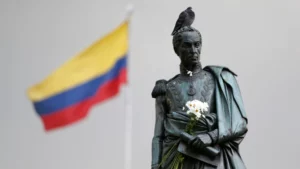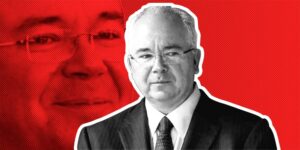Publicado en: The Washington Post
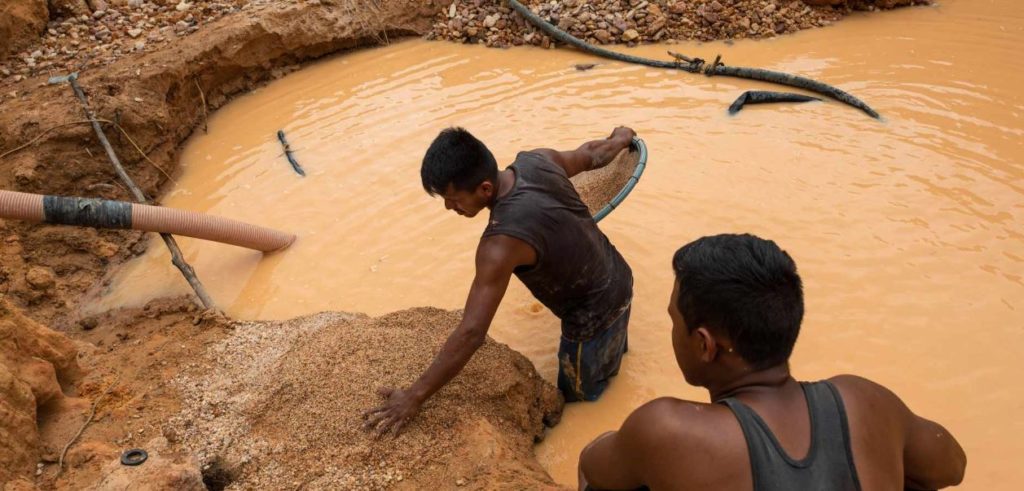
Photo: Michael Robinson Chavez
Reversals of fortune
These two places symbolized Venezuela’s strength. Now they epitomize its implosion.
Story by Mariana Zuniga
Photos by Michael Robinson Chavez
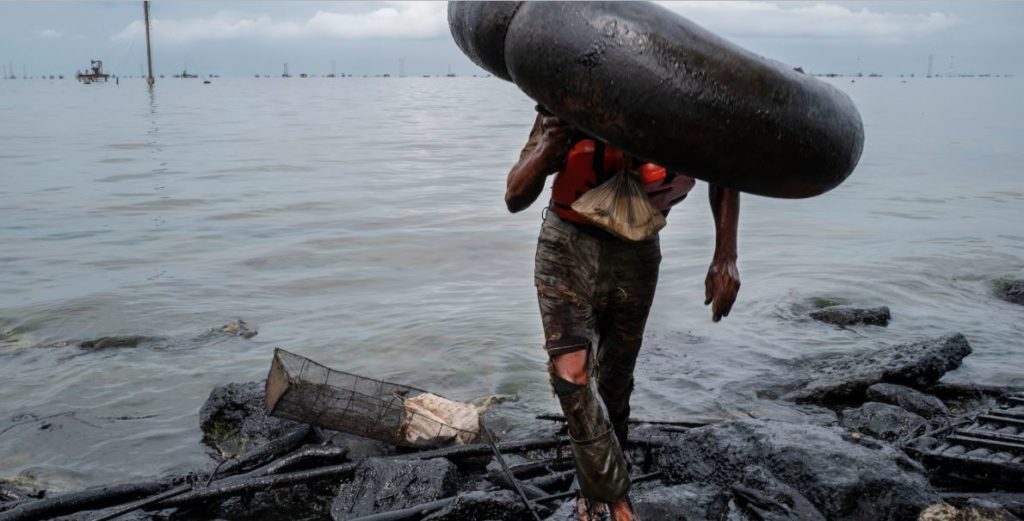
Photo: Michael Robinson Chavez
Not all that long ago — before the crony socialism that wrecked its economy, before the junta that robbed people of their rights, before the Weimar-level inflation that impoverished its people, before foreigners gave up on coming here — Venezuela had a lot going for it. Among other things, tourism brought a million people and $1 billion per year into the country as visitors came to witness its natural beauty; its oil fields, the most productive in Latin America, enriched generations of Venezuelans.
The advent of Chavismo socialism, beginning with Hugo Chávez’s presidency in 1999, was the beginning of the end for the country’s energy sector, which decayed under mismanagement. And the economy’s collapse after his death finished off the tourism sector. Now, six years of crisis later, one of Latin America’s richest nations has become one of its most impoverished. Corruption and inept governance have stoked hyperinflation. The monthly minimum wage is $2. Hunger is rampant, and few can afford medical care. Some 4 million Venezuelans, one-eighth of the population, have emigrated to flee those conditions.
And the things Venezuela had going for it? In Maracaibo, the petroleum capital, furloughed and destitute workers scrape by in a region literally awash in crude, since the state oil company doesn’t have money or employees to plug leaks. In Bolivar state, in a nature preserve where tourists once flocked to see Angel Falls, the indigenous Pemon people responsible for its care are ravaging the forest in search of gold — now the only way they can feed their children. The photography of The Washington Post’s Michael Robinson Chavez zooms in on these twin catastrophes as an allegory for Venezuela’s collapse.
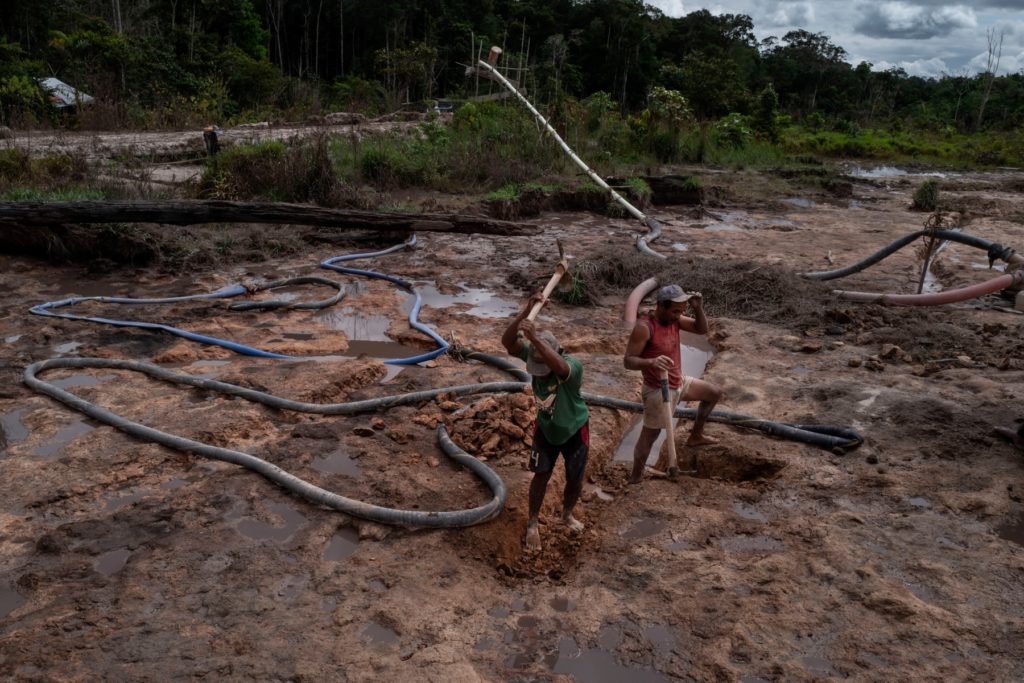
Photo: Michael Robinson Chavez
CHAPTER 1 | EL PAUJI
A pristine wilderness, decimated for mines
The deafening sound of an engine drowns out the rumble of thunder announcing the beginning of the rainy season. A couple of drops fall on a muddy pond where three children play. Nearby, a bare-chested indigenous man holds a water hose at the mouth of an open mine that is ripping the jungle apart. “Do you know who was against mining?” José Hernández yells over the din. He is standing knee-deep in what used to be a sacred river, now brimming with chemicals and gasoline. “Me!”
The indigenous Pemon people are the original inhabitants of La Gran Sabana, part of a vast nature preserve in the southeast corner of this oil-rich nation. They believe that the land here, which the government gave them control of in 2005, is sacred.
But so, too, is survival. The collapse of their country’s economy has pressed them with an impossible choice: leave behind their traditional way of life — crafting, fishing and running a tourism sanctuary — to hunt for gold in their backyards, or starve. So today, they run this mine.
Hernández, 25, once helped operate his mother’s inn here. In the early 2000s, hundreds of people arrived monthly to swim in La Gran Sabana’s crystal-clear rivers, bird-watch or hike its flat-top mountains known as tepuyes. The family made a steady living, and when he turned 18 in 2012, he moved to Zulia state to train as an oil engineer. President Hugo Chávez was still in office.
After his studies, Hernández worked as an intern at the state oil company, PDVSA, but he eventually realized that the company was in trouble. His salary barely paid for two chickens per month. So he returned home in 2017 — and found that everything had changed. Tourism had dried up, and his mother had closed her business. His only choice was a mine. He and his cousins opened theirs last year.
By extracting gold, Hernández can earn up to $120 some weeks — about 240 times the country’s minimum wage. Gold is considered a lifeline as Venezuela goes through the worst economic crisis in its history; sanctions mostly prevent the country from selling its oil, but 8,000 tons of the precious metal are locked in its earth, some of the largest reserves in the world. To reach it, Hernández has to ravage the land visitors once came to see. “I wouldn’t want to do it,” he says. “I feel responsible for the damage. But what can I do? As an engineer, I will starve.”

Photo: Michael Robinson Chavez

Photo: Michael Robinson Chavez

Photo: Michael Robinson Chavez

Photo: Michael Robinson Chavez
As recently as 2008, Venezuela generated $1 billion in tourism revenue, according to the World Tourism Organization, and 988,000 people visited the country in 2012, the peak year. They came to see its hundreds of miles of Caribbean coast, its jungles, its deserts and its snow-capped mountains.
Since then, tourism has dropped by more than half, according to the last available data, generating $473 million in 2016; today that revenue is surely even lower. The United States and European nations issued travel warnings as Venezuela entered a crippling economic crisis in 2014, and more than 15 international airlines have stopped flying there. Last year, the country ranked in the bottom six in global tourism growth, according to estimates by the World Travel & Tourism Council.
Some places have been hit especially hard. La Gran Sabana, home to the world’s highest waterfall, Angel Falls, is one of them. This tropical plateau that inspired Arthur Conan Doyle’s “The Lost World” attracted a huge share of Venezuela’s international visitors. In 1998 alone, just before Chávez took office, La Gran Sabana received 150,000 foreigners, who spent about $15 million, according to the local tourism guild. Last year, only 21,000 came, and local vendors didn’t do more than $1 million in business, says Isaam Madi, former president of La Gran Sabana Chamber of Tourism. Inns closed or are waiting out the crisis.
In 2017, an American citizen was the last to show up in El Pauji. “Since then we haven’t received anyone else,” says Elba Benavidez, 53, who used to run a camping site. Today there’s just one barely operable inn, of the 11 there once were in the area. No restaurants remain — only a bakery where the whole town gathers after 5 p.m. And so the caretakers of La Gran Sabana now wreck the place they had vowed to protect.
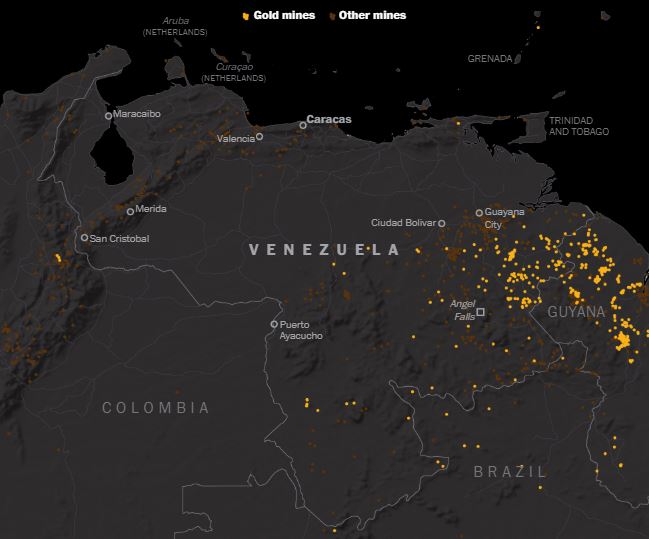
In some ways, they are following the lead of Caracas. In 2016, hoping to win back international investors, President Nicolás Maduro created the Orinoco Mining Arc, an area bigger than the state of Maine, designated for extracting precious minerals. (The arc crosses the territory of more than 10 indigenous groups, and the maneuver seems to have revoked Pemon control of the land, as it happened without officials consulting them.) The gold rush has kept the country afloat, circumventing U.S. and international sanctions that cut it off from the global financial system.
The Mining Arc runs along the southern bank of the Orinoco, one of the world’s largest rivers, where thousands of indigenous people live. According to SOS Orinoco, a private advocacy group, mining activities wreck the local ecology, causing sedimentation, water pollution, deforestation and the loss of entire ecosystems. And mining has now spread not just through the Orinoco arc but also into protected forest reserves and national parks that once attracted tourists.
It’s especially true in El Pauji, a hamlet that had long prioritized protecting the wilderness over exploitative mining. “Many indigenous communities that lived from tourism are dedicated exclusively to mining,” Madi says.

Photo: Michael Robinson Chavez
On the unpaved road that leads to and traverses El Pauji, illegal open-pit mines run along each side. They come in all shapes and sizes: from tiny open ponds to massive holes two stories deep. “Directly or indirectly, everyone turns to the mine to survive,” laments Alicia Márquez, the 48-year-old mayor.
When she took over two years ago, she tried to push miners out of the hamlet. But now she appreciates the need to keep residents employed. “I can’t force them to abandon the mine. As a leader, I have to understand their situation,” she says. Márquez says gold helps to pay for teachers’ salaries, medicines and food at the local school; 7 percent of total production goes back into the community.
Here, life is expensive. The bolívar, the national currency, is worthless, and goods are paid for in gold or reals, the Brazilian currency. According to experts, mining has helped trigger the nation’s crippling inflation. (Using gold as currency grows the monetary supply.) When a kilo of cornmeal costs 29,000 bolívares in the capital, it can cost more than double in La Gran Sabana. If you don’t have a job in the mine, it’s impossible to pay for it. The high cost of living has led many to leave their jobs. Herminia Rodríguez, 45, who teaches at the local school, says four teachers have left to work in mines this year.

Photo: Michael Robinson Chavez

Photo: Michael Robinson Chavez

Photo: Michael Robinson Chavez

Photo: Michael Robinson Chavez
Red craters and white scars are visible in the vegetation where mining has left open scars in the jungle. “Mining has caused such serious damage that even if the activity were completely stopped this year, it would take at least 50 years to recover the entire area,” says Manuel Díaz, president of the environmental foundation Vida Verde.
For many environmentalists, it’s especially worrying how illegal mining has endangered Canaima National Park, a UNESCO World Heritage site that includes La Gran Sabana. Using satellite imagery, SOS Orinoco identified more than 30 illegal mines inside and along the park’s borders. There are at least 1,899 illegal mines in the country, and about 80 percent of South America’s illicit extraction is in Venezuela, according to a report by the Amazon Geo-Referenced Socio-Environmental Information Network.
In many instances, Caracas has rejected new mine permits, but advocates say it does nothing to stop illegal digging. “The government turns a blind eye on it, because the army is making money by controlling the gasoline that miners need to work,” says Javier Mesa, a tourism guide and ornithologist with more than 30 years of experience in the region. “If this situation persists, southern Venezuela could become the largest open mine in the world.”
At the core of the dispute between those who see mining as their only alternative and those who believe it could cause irreparable damage are two tricky questions: To whom does this land belong? And who or what should be compromised? Most indigenous leaders claim their right to mine, but other locals, environmentalists and tourism workers want to restore their pre-mining lives. “Somehow both parties are right. But indigenous should mine outside the parks because they belong to all Venezuelans, not just to them,” Mesa said.
Caracas is gripped by a civil conflict: Juan Guaidó, the head of the national assembly, says he is the rightful interim leader of Venezuela, but Maduro isn’t relinquishing power. It seems unlikely that stability will return anytime soon and tourists will suddenly start streaming back into Venezuela. But whenever they do, there may not be much jungle left to visit.
CHAPTER 2 | MARACAIBO
When the oil industry collapsed, it took this city with it
This was once a buoyant city, the country’s second largest, an oil boomtown. A city of excesses and extravagant wealth, where everything abounded. It was the first city in Venezuela to have phone lines, a regular electrical supply, public transportation, a bank, a brewery and even ice cream pushcarts rolling around, according to a local historian. Oil exploitation began on the shores of the lake here when, in 1922, the first well blew out — turning Venezuela into the world’s biggest oil exporter. When Hugo Chávez’s socialist rule began in 1999, the nation produced 3.5 million barrels per day. People called this region “the Venezuelan Texas.”
Now almost nothing functions here. There is power for only a few hours a day. The city’s water taps are drying up. Commercial areas look like ghost towns. Buses carrying workers to and from their jobs have disappeared. At night, roads are empty and pitch-black. Nothing is heard, except for the buzz of diesel generators owned by the lucky, wealthy few. In the summer heat, locals sleep on their front porches. And the country’s oil production is just 21 percent of what it was two decades ago, according to a local analyst’s study of OPEC data.

Photo: Michael Robinson Chavez

Photo: Michael Robinson Chavez

Photo: Michael Robinson Chavez

Photo: Michael Robinson Chavez
The collapse has been underway for more than five years. In interviews, 10 current and former employees of PDVSA, the state oil company, blame scant investment, corruption, lack of maintenance and politicization of the industry. Things took a turn in 2009, they say, after Chávez nationalized dozens of local oil service companies around Lake Maracaibo. From that moment, the drills began to peter out. Damaged equipment was never replaced, and production began to fell drastically.
Even though this region has more oil in the ground than all of Brazil, and more than double what’s in Mexico, workers have been furloughed, and the entire economy supporting them — equipment-repair companies, divers, restaurants, gas stations, truckers — has imploded. Meanwhile, as rigs lie fallow and untended, petroleum is leaking into marshlands and fisheries here, imperiling the people most impoverished by the end of the oil boom. On top of all this, Washington imposed sanctions in January, closing off not just the world’s markets to Venezuelan crude but also any hope for recovery.
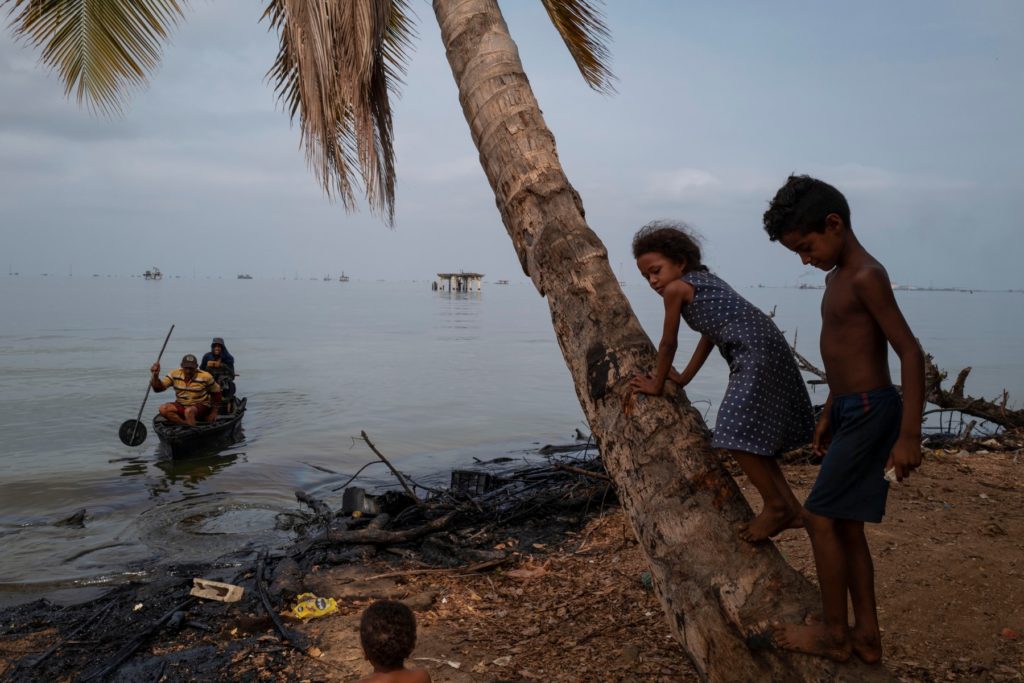
Photo: Michael Robinson Chavez
Taking a stroll around Lake Maracaibo, a 5,000-square-mile estuary that opens onto the Gulf of Venezuela, means encountering a junkyard of rusting equipment. Hundreds of half-sunken barges and speedboats are piled up near oil ports. Broken platforms in the middle of the water barely balance in place. Abandoned dockyards and drilling rigs are plentiful.
For years, the oil sector offered the highest wages in the country. Employees and their families lived in tony suburbs. “PDVSA was wonderful, everyone dreamed of working there,” says Jose Oxiarty, who used to manage company transportation on the lake. He is sitting in a shadowy, almost-deserted shopping mall during what was already an hour-long power outage, trying to remember the halcyon days.
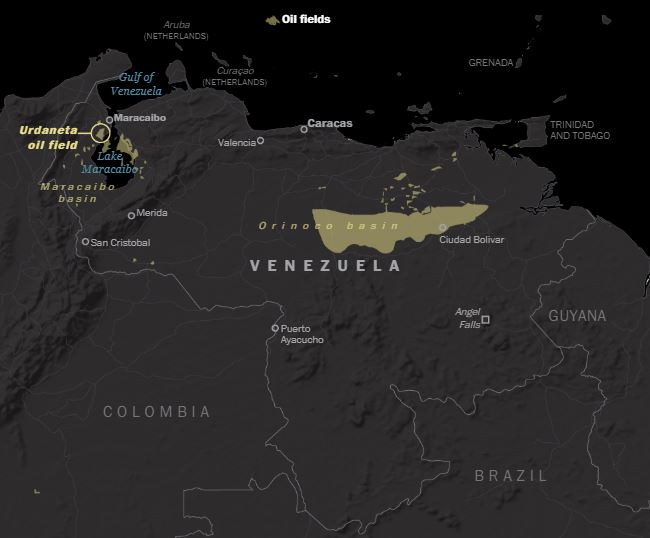
Back in 2004, Oxiarty often visited the Urdaneta oil field, operated by Shell, a dozen miles from his Maracaibo home, where 500 people used to work, he says. He would ferry workers by boat from the oil fields to drills on the water. He recalls drilling barges bunched together on the lake, three-course lunches in the company’s cafeteria, the chatter with colleagues about new contracts.
Last time Oxiarty visited the Urdaneta oil field, in January, a single barge was drilling, and no workers were in sight. Oil wells, storage tanks, barges and power stations had been pillaged for their wires, pipes and equipment, probably by the very workers who had operated them — and by the gangs of pirates who wander the lake. “It was ghostly,” he says, “as if an atomic bomb had exploded there.”
At this, he begins to cry.
“How do I tell you without feeling so bad?” He pauses. “PDVSA is ruined.”
After three decades working for PDVSA, Oxiarty was fired in May, along with seven others, for denouncing corruption inside the firm to the local media. (He pointed out that PDVSA was paying companies handsomely to recover damaged equipment, but those contractors did no work. “It was all a farce,” he says. “They didn’t bring any investment, personnel or even tools.”) Now he sells spare parts for phones.

Photo: Michael Robinson Chavez

Photo: Michael Robinson Chavez

Photo: Michael Robinson Chavez

Photo: Michael Robinson Chavez
All around Oxiarty, the ravages are almost impossible to comprehend. Official information is hard to find, but according to union leaders here in Zulia state, less than 15 percent of the equipment works. That includes diving gear for working the rigs, drill parts and even boats to get workers onto the oil platforms.
Of PDVSA’s 100 boats on Lake Maracaibo that moved workers between drilling platforms and the shore, only two are operational, says Alirio Villasmil, head of the company’s diver department here. About 450 of 900 divers have resigned in the past five years. Villasmil says that, before his colleagues migrated away, he saw three divers faint on the job; they hadn’t been eating because they couldn’t afford food.
Hyperinflation has made the Venezuelan bolívar practically worthless. Around the world, an oil industry diver in an entry-level job can earn $900 per week. But before he quit last November, José Molero made just $6 per month as a PDVSA diver. “It was harrowing to arrive home and receive a reproachful gaze from my wife because there was nothing to eat for dinner,” he says. He packed his bags for Chile, where he works now as a supervisor of diving equipment and sends money back to his family here.
The lack of investment and maintenance has increased the number of accidents. One of Molero’s supervisors was a victim: When a boat he was riding hit a barge, a metal wire sliced him in half. “It was horrendous,” Molero says. “Workers knew that boat had problems and went to work that day under pressure. . . . There have been many more accidents.”
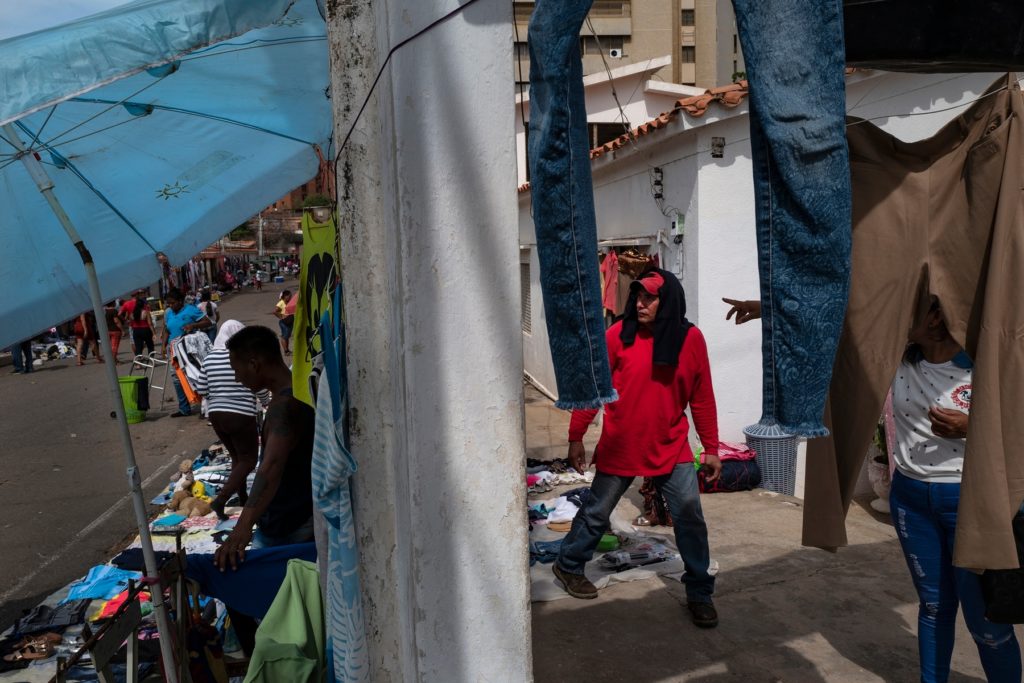
Photo: Michael Robinson Chavez
Those who remain here, despite the lack of work and the dangers, find a toxic environment. There are so many cracked pipes under the lake that in 2016, the date of the last available data, the Zulia State Engineers Center estimated that tens of thousands of gallons of oil poured into the lake each month. “All those pipes are mostly collapsed,” says Marcelo Monnot, former president of the center. An oil spill is considered a crime under Venezuelan environmental law. Yet the accidents of recent years haven’t resulted in any penalties.
Omar González grew up fishing in the lake. Decades ago, he fed his family exclusively on what he caught there. Now, every time he returns home, he brings less fish and more oil. “With this pollution, we struggle to get something to eat,” he says.
In 2013, a commercial fisherman caught an average of about 3,000 pounds per day, according to the Zulia State Engineers Center. By 2016, daily fishing had been reduced to about 100 pounds per fisherman.
González’s boat, his engine and his net have been blackened by oil. At the end of a day on the water, he has to douse himself in gasoline to remove the petroleum. “You get used to oil. But gasoline is something else. It poisons you little by little.”
The shores, too, are coated in a black paste that adheres to everything it touches. A cracked pipe sticks out into Yuleidy Silva’s backyard, a few meters from the water. For nine months, it hasn’t stopped spitting oil, which seeps into her house, staining everything. “PDVSA forgot about us,” she says, pointing out that three of her five grandchildren have had skin lesions from bathing in the lake. Now, she forbids them from getting in the water. She also worries that she lives in a flammable stew. “If some of those tanks explode, we all explode,” she says.
According to the Manatará Ecological Foundation, which studies the contamination of Lake Maracaibo, oil caused 30 cases of asthma and dermatitis among people living on the east bank between 2017 and 2019. At the Cabimas Hospital on that shore, 80 percent of the outpatient visits are associated with oil spills and gas fumes, the foundation says. Doctors warned Jessica Chavez, whose 8-year-old son, José, has suffered from asthma for five years. “They have told me to take him away,” says Chavez. “But we live here. Where else we can go?”

Photo: Michael Robinson Chavez

Photo: Michael Robinson Chavez

Photo: Michael Robinson Chavez

Photo: Michael Robinson Chavez
The shortage of gasoline in Venezuela’s oil capital is perhaps one of the greatest ironies of this place. According to the National Assembly, Venezuela’s refining capacity is at 10 percent, which represents 120,000 barrels per day, yet internal consumption is 200,000 barrels per day. (OPEC figures from last year show internal consumption is more than twice that amount.) So residents line up for hours, even days, to fill up their vehicles’ tanks at official stations. On the black market, gas sells at 300,000 times its official, state-assigned value.
The fall of oil prices in 2014 was a bad enough hit for PDVSA, already an organization in crisis. The U.S. sanctions from January could be the final blow. Since then, PDVSA has been unable to access international markets, hampering the purchase of ultralight oil needed to refine its heavy crude into gasoline. Theoretically, experts say, the oil industry can recover, but it will require attracting a large amount of foreign investment — money that, as long as Maduro remains in office, is mostly blocked from coming here.
For Maracaibo, PDVSA was the engine that moved the economy. During international oil fairs, hotels flooded with business executives. Once a year, paint companies were hired by PDVSA to put a fresh coat on the company’s buildings. And every Friday, as soon as they got their salaries, oil workers flocked to the famous flea market.
But Venezuela’s centralized economy ground that engine to a halt, and the ensuing economic crisis brought hyperinflation, malnutrition and rolling blackouts, as the majority of oil revenue went directly to Caracas and never returned here. “Despite being the capital of a prominent state,” says a famous folk-music lyric from the 1960s, Maracaibo “suffers from national oblivion.”
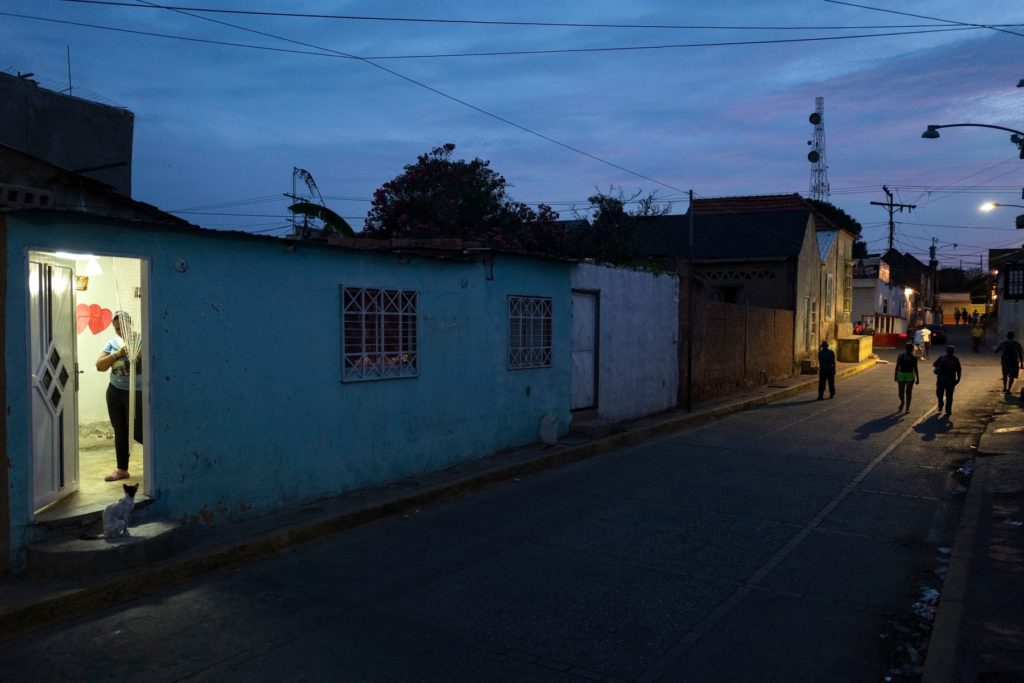
Photo: Michael Robinson Chavez



